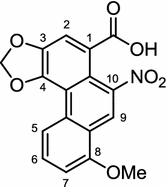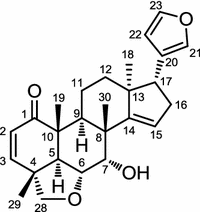Plant natural products as an anti-lipid droplets accumulation agent
- PMID: 24550097
- PMCID: PMC3948524
- DOI: 10.1007/s11418-014-0822-3
Plant natural products as an anti-lipid droplets accumulation agent
Abstract
Recently people often suffer from unhealthy energy metabolism balance as they tend to take more energy than required. Normally, excess energy taken in is converted into triglyceride and stored in adipocyte as lipid droplets. Recent studies have suggested that irregular accumulation of triglyceride in adipocyte might be a cause of many metabolic diseases. Thus, the awareness of the detrimental effects on health of excessive lipid droplets accumulation (LDA) has urged the development or finding of drugs to counter this effect, including those from botanical origins. This review summarized recent progress in this field from the viewpoint of crude drug studies with references to their anti-LDA activity. Possible mechanisms involved in their anti-LDA effect and isolations of the relevant bioactive compounds were also discussed.
Figures













References
-
- Trayhum P, Beattie JH. Physiological role of adipose tissue: white adipose tissue as an endocrine and secretory organ. Proc Nutr Soc. 2001;60:329–339. - PubMed
-
- Kershaw EE, Flier JS. Adipose tissue as an endocrine organ. Int J Clin Endocrinol Metab. 2004;89(6):2548–2556. - PubMed
-
- Willett WC, Manson JE, Stampfer MJ, Colditz GA, Rosner B, Speizer FE, Hennekens CH. Weight, weight change, and coronary heart disease in women: risk within the “normal” weight range. J Am Med Assoc. 1995;273:461–465. - PubMed
-
- Haslam DW, James WP. Obesity. Lancet. 2005;366:1197–1209. - PubMed
Publication types
MeSH terms
Substances
LinkOut - more resources
Full Text Sources
Other Literature Sources

